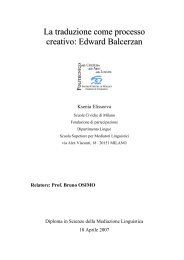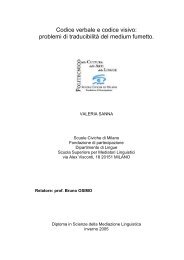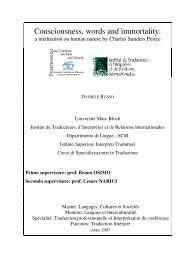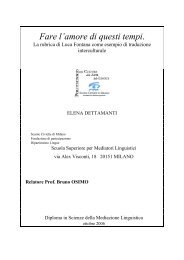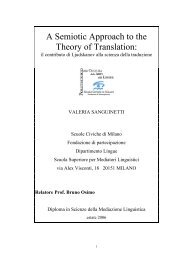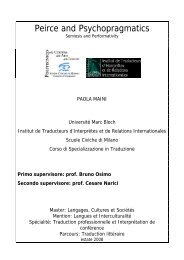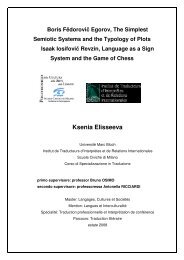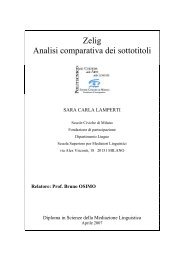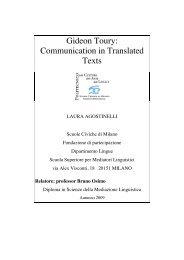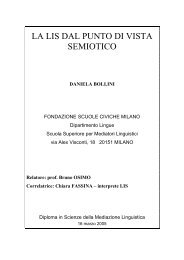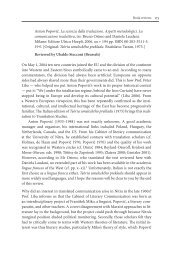Alice in Wonderland - Bruno Osimo, traduzioni, semiotica della ...
Alice in Wonderland - Bruno Osimo, traduzioni, semiotica della ...
Alice in Wonderland - Bruno Osimo, traduzioni, semiotica della ...
Create successful ePaper yourself
Turn your PDF publications into a flip-book with our unique Google optimized e-Paper software.
Elisabeth II., es. la re<strong>in</strong>a Isabel II, but, illogically, es. Isabel I la Católica ><br />
de. Isabella I., die Katholische, and not *Elisabeth I., die Katholische. It is<br />
obvious that proper names are <strong>in</strong>deed translated, if we regard “translation”<br />
as a process of l<strong>in</strong>guistic and/or cultural transfer.<br />
In fictional texts, like novels or children’s books, proper names do not<br />
refer to real, exist<strong>in</strong>g people <strong>in</strong> a factual way. They may, however, refer to<br />
real persons <strong>in</strong>directly, like <strong>in</strong> <strong>Alice</strong> <strong>in</strong> <strong>Wonderland</strong>. But still, the <strong>Alice</strong> of the<br />
book is a fictional character, and no reader would expect her to be a true<br />
reproduction of the “real” <strong>Alice</strong> Liddell for whom Lewis Carroll wrote the<br />
story.<br />
To f<strong>in</strong>d a name for their fictional characters, authors can draw on the<br />
whole repertoire of names exist<strong>in</strong>g <strong>in</strong> their culture, and they can <strong>in</strong>vent new,<br />
fantastic, absurd or descriptive names for the characters they create. We<br />
may safely assume, therefore, that there is no name <strong>in</strong> fiction without some<br />
k<strong>in</strong>d of auctorial <strong>in</strong>tention beh<strong>in</strong>d it, although, of course, this <strong>in</strong>tention may<br />
be more obvious to the readers <strong>in</strong> one case than <strong>in</strong> another.<br />
5In the follow<strong>in</strong>g paper, I would like to analyse the forms and functions of<br />
proper names <strong>in</strong> Lewis Carroll’s <strong>Alice</strong> <strong>in</strong> <strong>Wonderland</strong> and the way they have<br />
been translated <strong>in</strong>to German, Spanish, French, Italian, and Brazilian<br />
Portuguese.<br />
2. Forms and Functions of Proper Names<br />
Unlike generic nouns, proper names are mono-referential, but they are by<br />
no means mono-functional. Their ma<strong>in</strong> function is to identify an <strong>in</strong>dividual<br />
referent. It has often been claimed that proper names lack descriptive<br />
mean<strong>in</strong>g:<br />
An ord<strong>in</strong>ary personal name is, roughly, a word, used referr<strong>in</strong>gly,<br />
of which the use is not dictated by any descriptive mean<strong>in</strong>g the<br />
word may have.<br />
27<br />
Strawson 1971: 23



